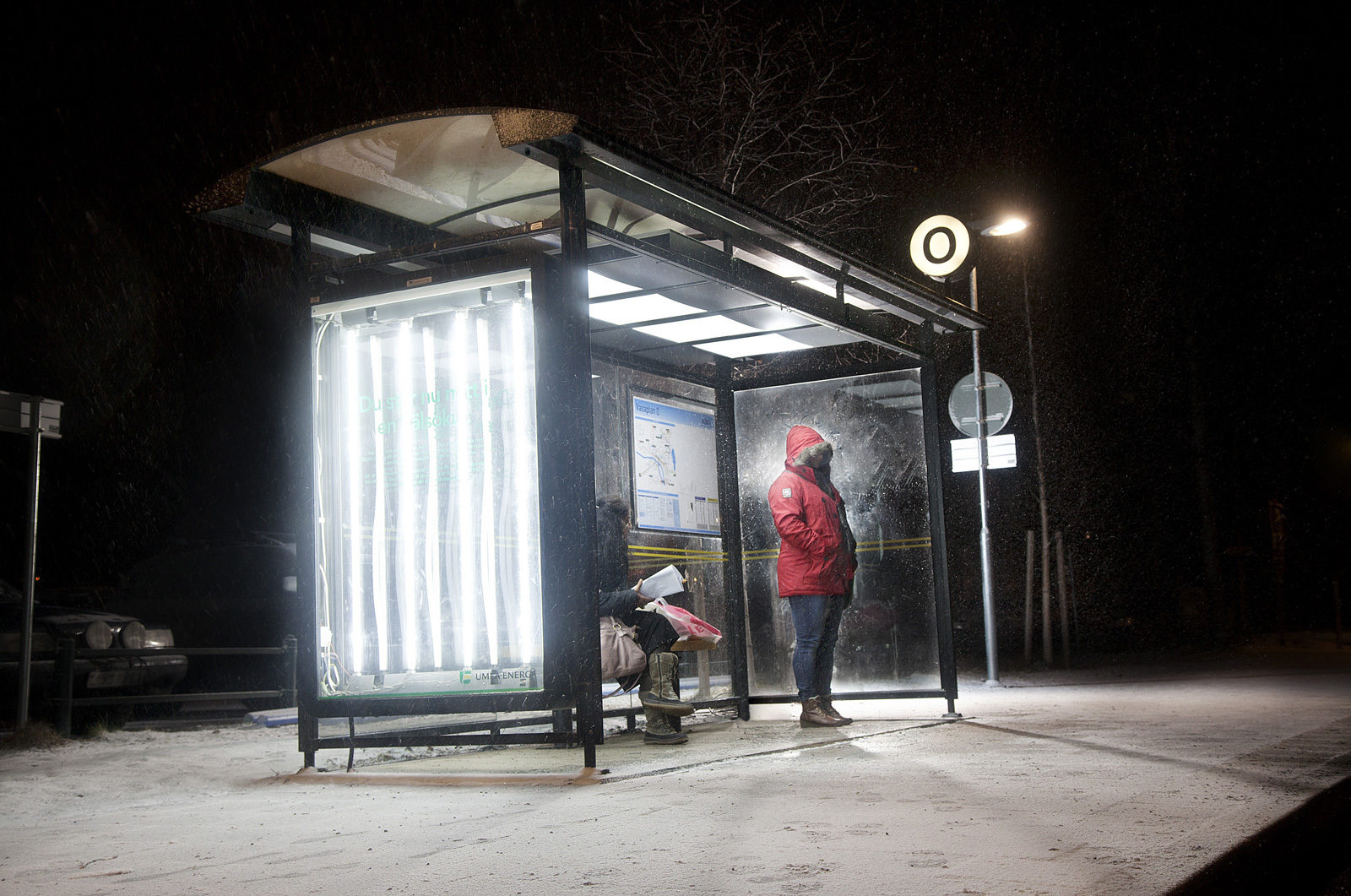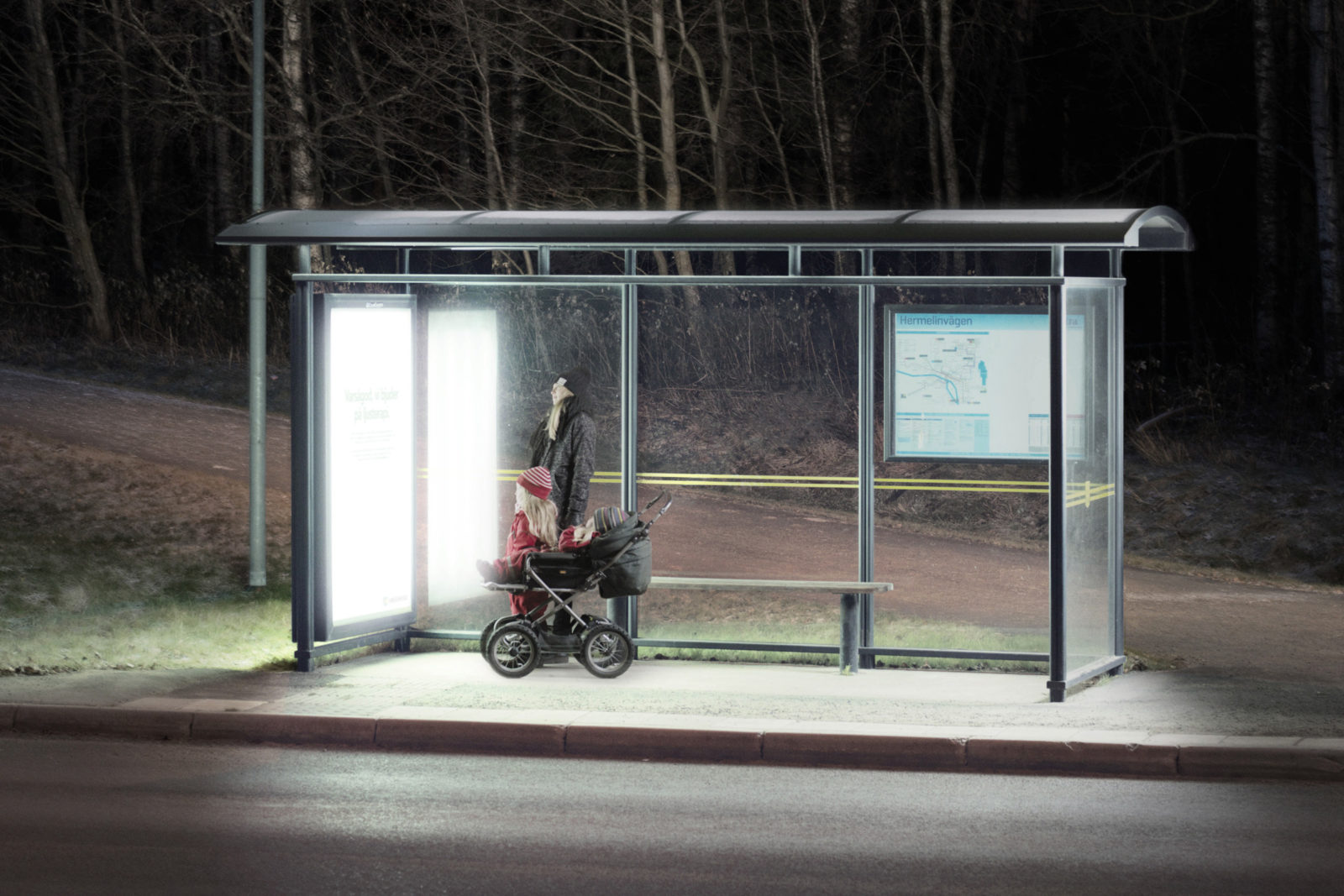Isaac Newton saw an apple fall. Charles Goodyear spilled a rubber mixture onto a hot stove. Ben Franklin put a key on a kite string. Umeå Energi replaced light bulbs in bus shelters.
Not all eureka moments in history are treated equally, but the last one makes people in northern Sweden smile—literally.
Umeå sits about 185 miles north of Stockholm. During the winter, the city receives less than 60 minutes of natural daylight. “If,” a resident clarifies, “the sun shines at all.”
Lack of natural daylight can have a profound impact on the mental health of individuals and the city as a whole. To counter this, Umeå Energi launched Ljusterapi (Light Therapy), an initiative that replaced lights in 30 of the city’s bus stops with natural light frequency anti-SAD (seasonal affective disorder) light bulbs. While waiting for the bus, commuters can face the lights for a few minutes to get the psychological benefits of the natural light they miss, absorb some Vitamin D, then continue on their journey.
“We wanted to show we care about the people living here in Umeå at this dark time of the year,” said Umeå Energi CEO Göran Ernstson. “People get depressed if they don’t see light.”
The company’s initiative used a pivot in thinking to transform ordinary urban structures into extraordinary devices. Instead of taking bus shelters for granted, Umeå Energi recognized that the structures contained extra potential. By replacing the shelters’ lights with light therapy bulbs, the company doubled the functionality of the shelters—protecting commuters while also serving as mood-boosting units.


The project was executed with refreshing agility—via an advertising campaign. Instead of laboring through the usual permissions and planning bureaucracy with city agencies, Umeå Energi rented the light units normally used to backlight movie posters or cell phone promotions and asked the advertising agency to replace the bulbs and put a clear poster in the frame.
Last but not least, the company’s narrative gives the project a poetic arc. The energy source that powers the light therapy bulbs comes from stored solar energy generated by Umeå’s abundance of daylight during its long summer days.
“Everything is a part of our commitment to take responsibility for both our customers’ everyday lives [and] the environment at large,” says Umeå Energi’s marketing manager Anna Norrgård.



